Mexico faces crisis of migrant children and families, with little housing and few resources

- Share via
REYNOSA, Mexico — After a weeks-long trip from her native Honduras, Juana Cruz Funez couldn’t understand why she and her daughter, Itzy, 8, had been denied their goal — entry into the United States.
“I heard people could stay in America if we came with our children,” a sobbing Cruz said moments after the U.S. Border Patrol expelled mother and child back across the Rio Grande to this Mexican border city.
Cruz, 40, and her daughter were among the ranks of hundreds of migrants, almost all Central Americans — mostly women and children — squatting in a public square a block from the Rio Grande here.
In the United States, the debate about the Southwest border has focused on an almost two-decade high in Border Patrol apprehensions, along with a sharp uptick in arrivals of families and unaccompanied minors.
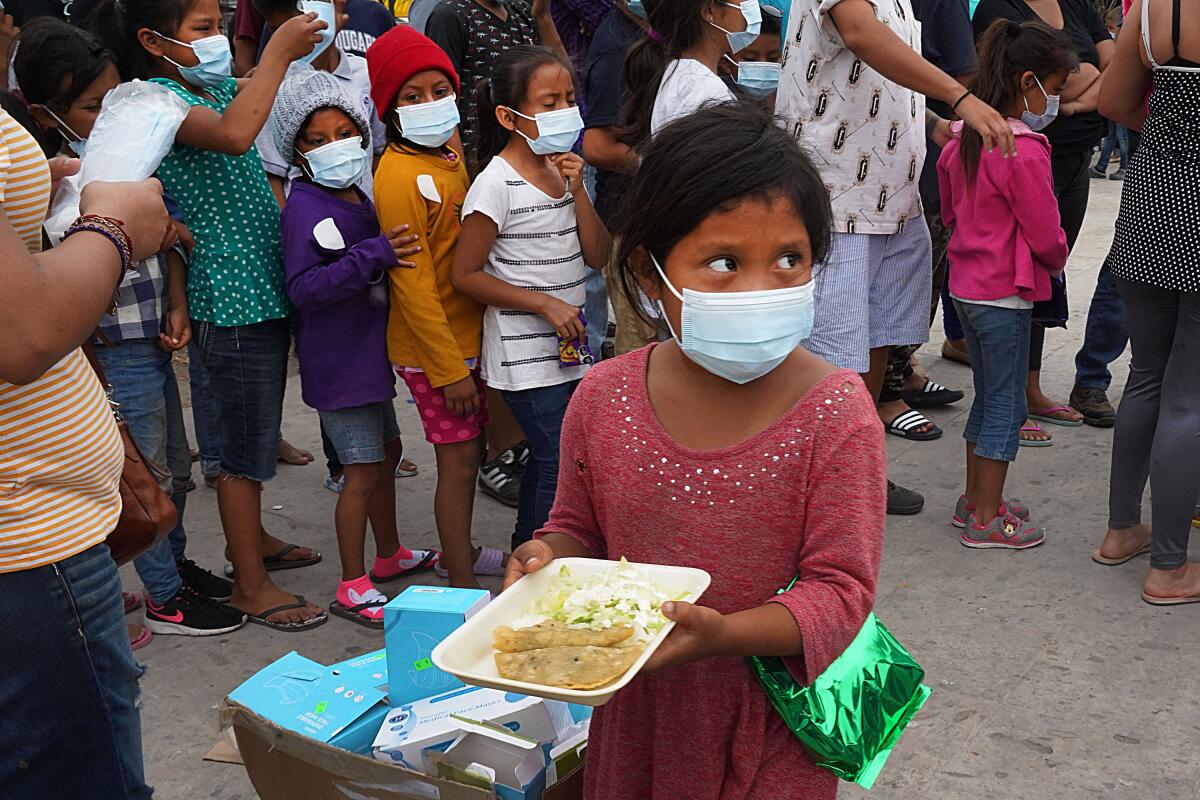
But with most migrants, including the Cruz family, quickly returned under pandemic health protocols, Mexico is facing its own crisis — an escalating humanitarian emergency caused by what authorities and advocates call an unprecedented increase in migrant families traversing its territory.
The Mexican government has failed to develop a strategy to care for the tens of thousands of migrant women and children expelled by U.S. authorities or in transit or stuck somewhere in Mexico. Instead, Mexican authorities have mostly outsourced the task to an over-stretched patchwork of private and religious charity outfits, medical aid organizations and sundry good Samaritans.
Shelters across Mexico are packed, amid reduced capacity because of the pandemic, and groups providing food and medical care strain to meet an acute need. The social safety net for migrants in Mexico has long been flimsy, but the problem has worsened as the number of people on the move has grown.

“Mexico has neither applied the resources or shown the will to deal with this,” said Jorge Vidal Arnaud, Mexico coordinator for Save the Children, the London-based charity. “The situation for migrant families and minors in Mexico is very grave.”
More than 150,000 migrant family members are in transit throughout Mexico, according to the United Nations Children’s Fund (UNICEF).
“We are deeply concerned that living conditions for migrant children and mothers in Mexico could deteriorate further,” Jean Gough, UNICEF’s regional director for Latin America and the Caribbean, said in a statement last month.
The problem extends far south of Mexico’s northern border.
The trail of destitute migrant families — along with adolescents and teenagers traveling without parents — stretches from Mexico’s southern frontier with Guatemala and extends hundreds of miles north on well-trafficked routes.
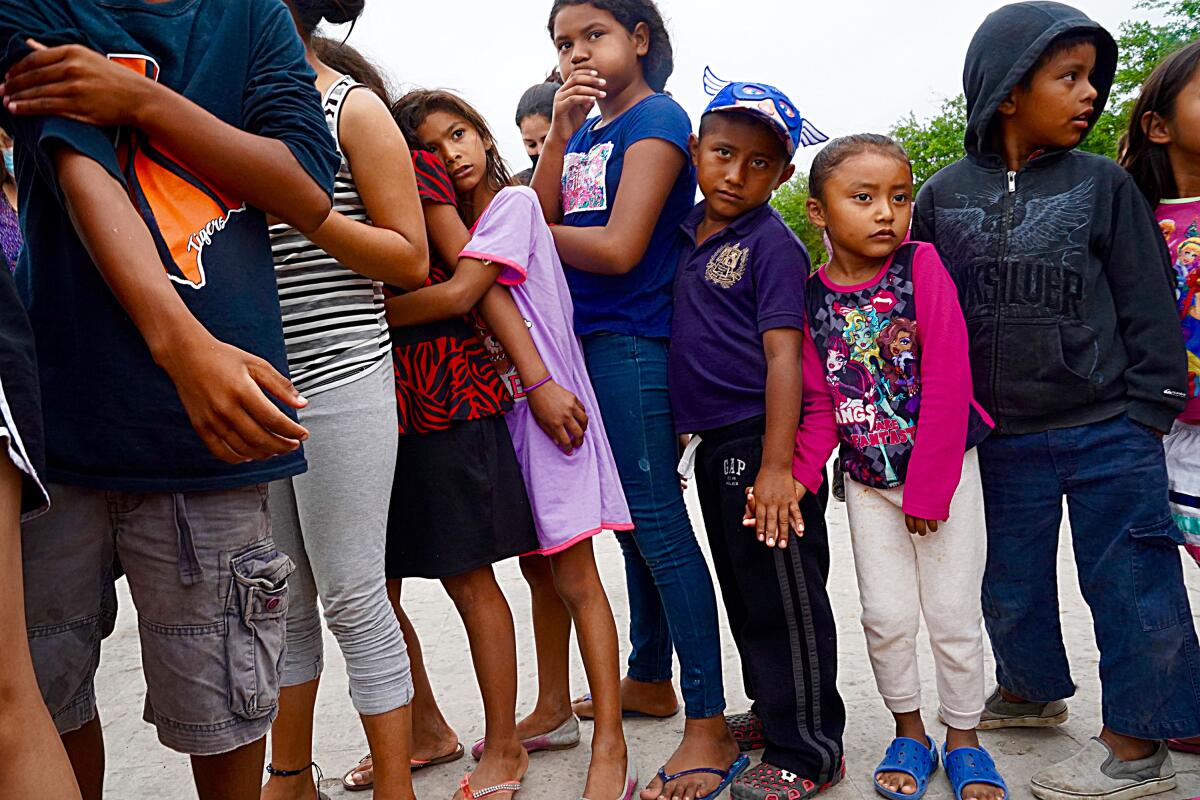
“It’s very difficult for us to have families, women, and also have to deal with this group of unaccompanied children,” said Fray Gabriel Romero, who runs a Catholic shelter in the southern Mexican town of Tenosique, close to the Guatemalan border.
His facility had provided assistance to 12,000 migrants through April — already approaching its one-year high of 15,000 in 2018.
The Mexican government, Romero said, “is leaving these people alone, without help, and is also leaving us alone with this responsibility.”
Mexican authorities concede that the influx dwarfs official capacity to care for them.
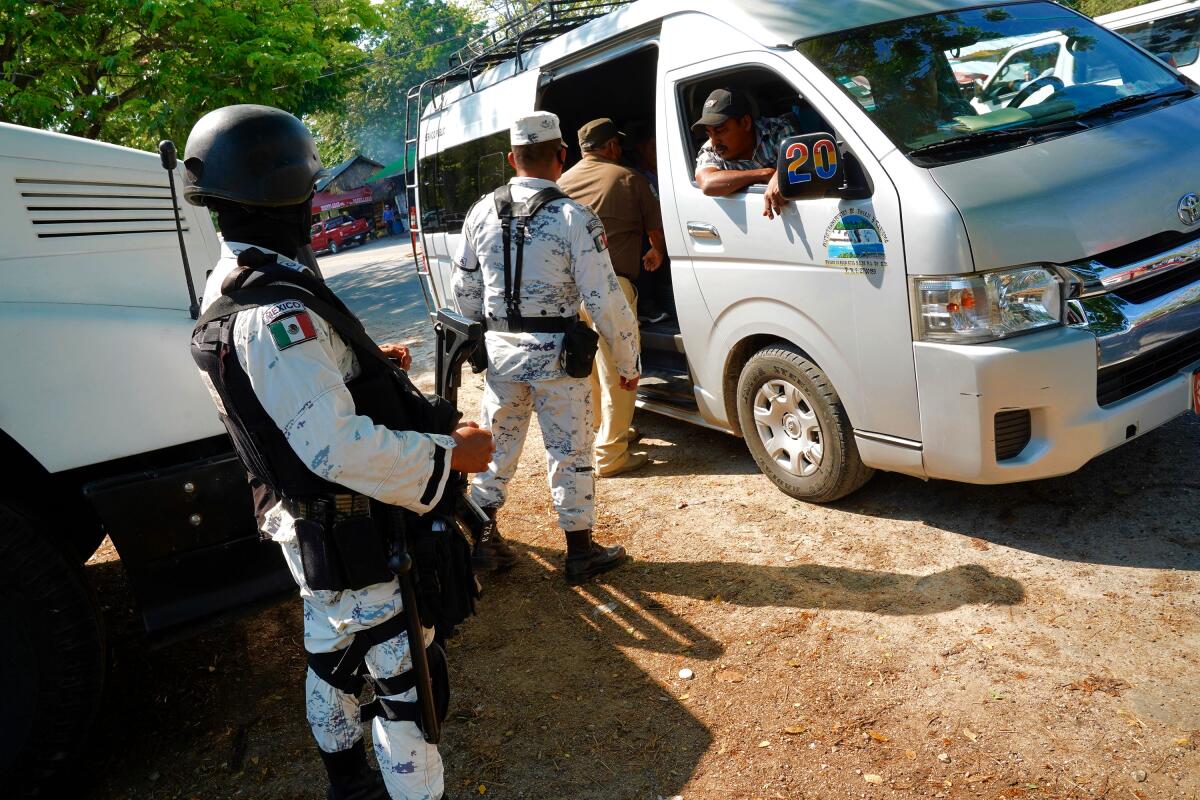
“We have to create the infrastructure for this,” Marcelo Ebrard, Mexico’s foreign secretary, told reporters last month. “The children crossing our territory are our responsibility … We have to protect them.”
Complicating matters is a Mexican law that took effect in January barring authorities from holding minors in the country’s notoriously squalid immigration lockups. Existing government child-welfare facilities were already packed.
“Unfortunately, with these changes in law there isn’t the infrastructure nor the human capital to attend to all these minors and families,” said Ricardo Calderón Macías, migration chief for the Mexican state of Tamaulipas, which shares a long border with south Texas and is the busiest illicit crossing zone.
He spoke as he led a reporter through a gymnasium in Reynosa that has been converted by state officials into a temporary shelter holding almost 200 migrants, mostly women and children.
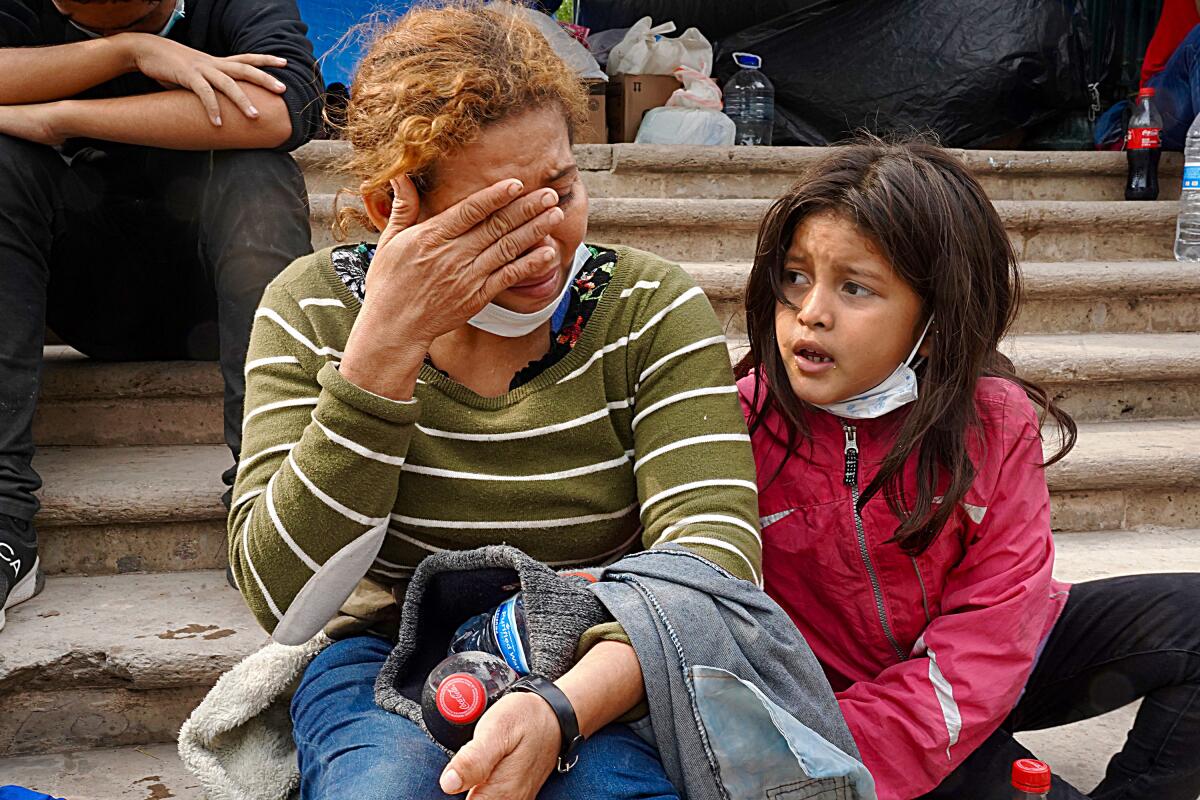
Mexico says it plans to open 17 new camps in coming weeks and months in southern states to accommodate migrant families and kids.
Mexican officials say that, aside from poverty, crime and other issues in their homelands, migrants are propelled by two factors: Somewhat relaxed border controls under the Biden administration, especially for children; and the belief of some parents that crossing as a family might facilitate entry into the U.S.
“Yes, they have the human right to live free of misery, and to look for work and well-being,” Mexican President Andrés Manuel López Obrador said of the migrants. “But one cannot do this using children.”
In 2019, López Obrador — who once assailed his predecessors for doing the United States’ “dirty work” by arresting and deporting U.S.-bound migrants caught within Mexico back to Central America — took a momentous step: He acquiesced to Trump administration demands that Mexico accept non-Mexican migrants expelled from the United States. Mexico has no legal obligation to receive them; the previous Mexican president had refused to do so.
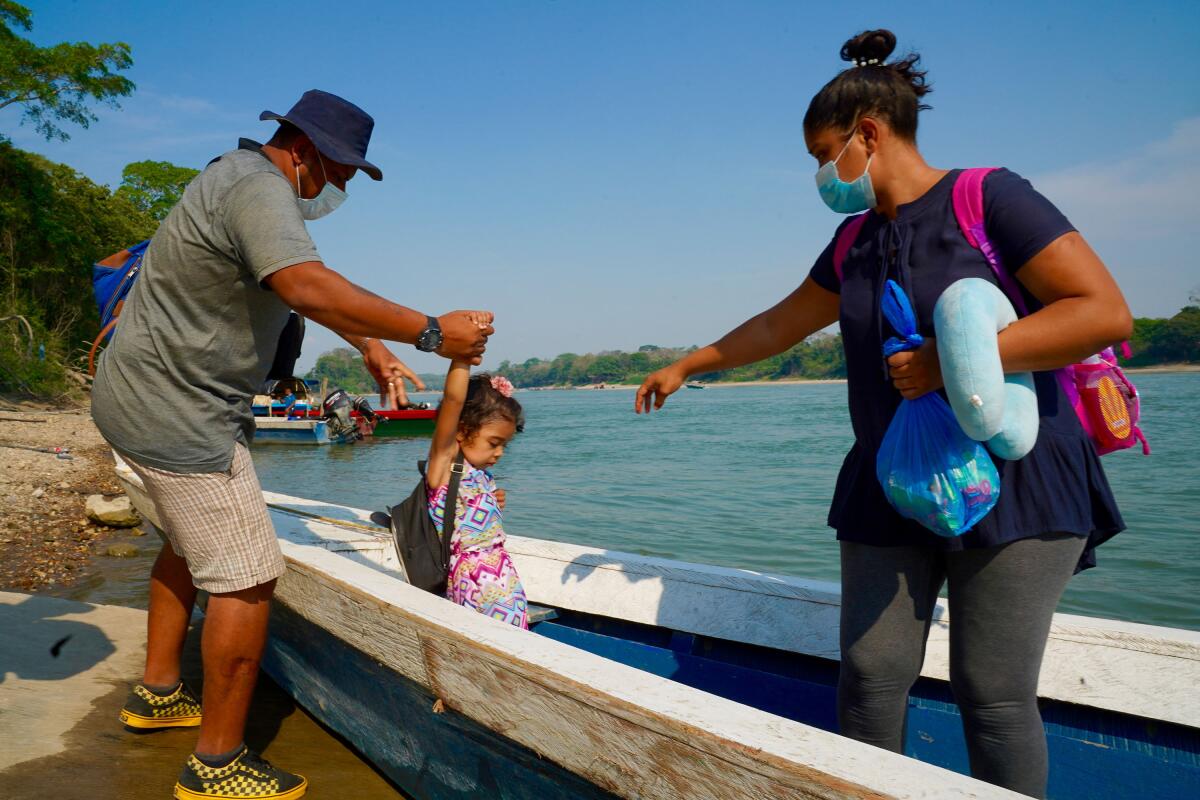
Since then, Mexico has hosted a continuous flow of needy migrants.
“Mexico agreed to do this without calculating that they would have to assume responsibility to house what is essentially an enormous homeless, indigent population with no real income source, and vulnerable to organized crime,” noted Adam Isacson, an analyst with the Washington Office on Latin America, an advocacy group. “They didn’t really seem to think this through.”
Mexico has continued accepting expelled migrants under Biden, though the country has refused to take back some families with small children. The Biden administration wants Mexico’s leaders to receive even more.
“They should all be going back,” Biden told reporters in March in his first press conference as president.
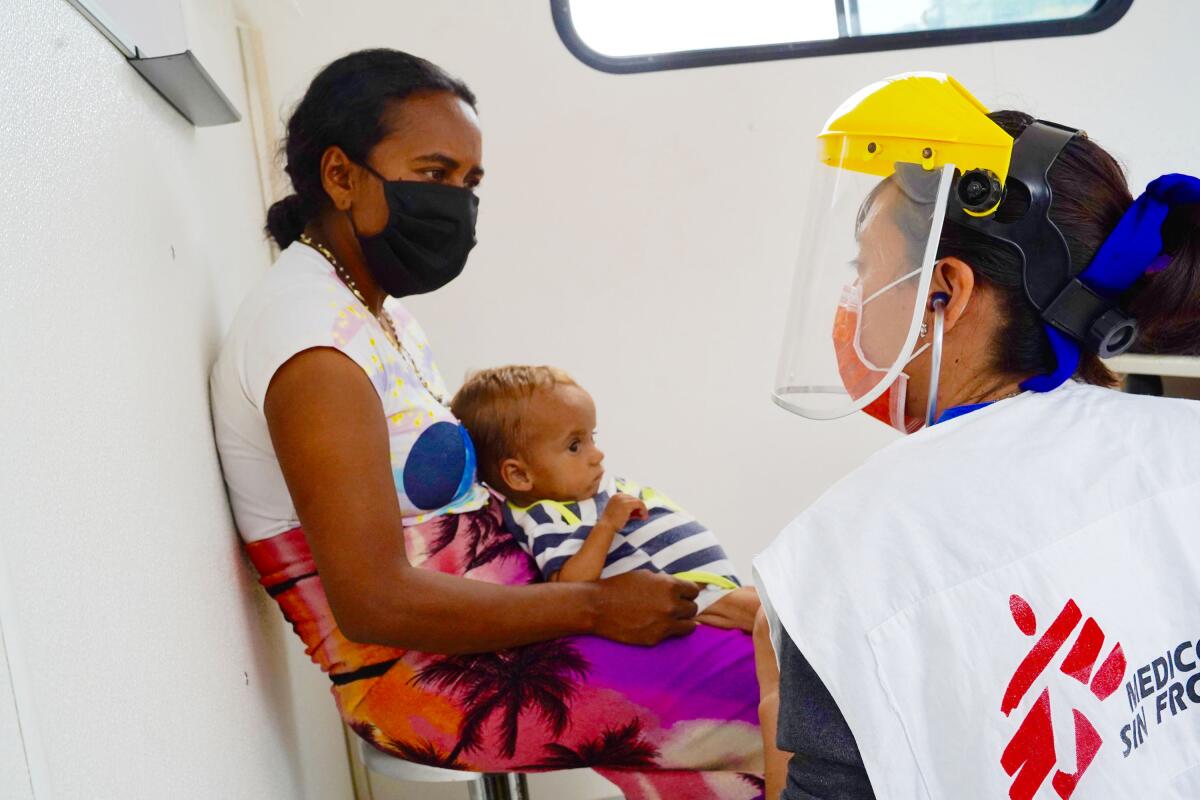
Mexico has also bowed to Biden administration demands that it step up enforcement to intercept northbound migrants throughout the country, deploying thousands of troops and immigration agents.
With shelters at capacity, migrants who can’t afford formal lodgings or smugglers’ safe houses often sleep outside on streets or in the brush, or pay to crash on someone’s property, before proceeding on their journeys.
On a recent morning, Eduardo Gallardo, 22, was among a group of seven Hondurans — two couples and three children — who were trying to catch a bus north from the city of Palenque in southern Mexico. Hanging from his chest in a sling was his 3-month-old daughter, Maryereli, who appeared dehydrated in the 90-degree-plus tropical swelter.
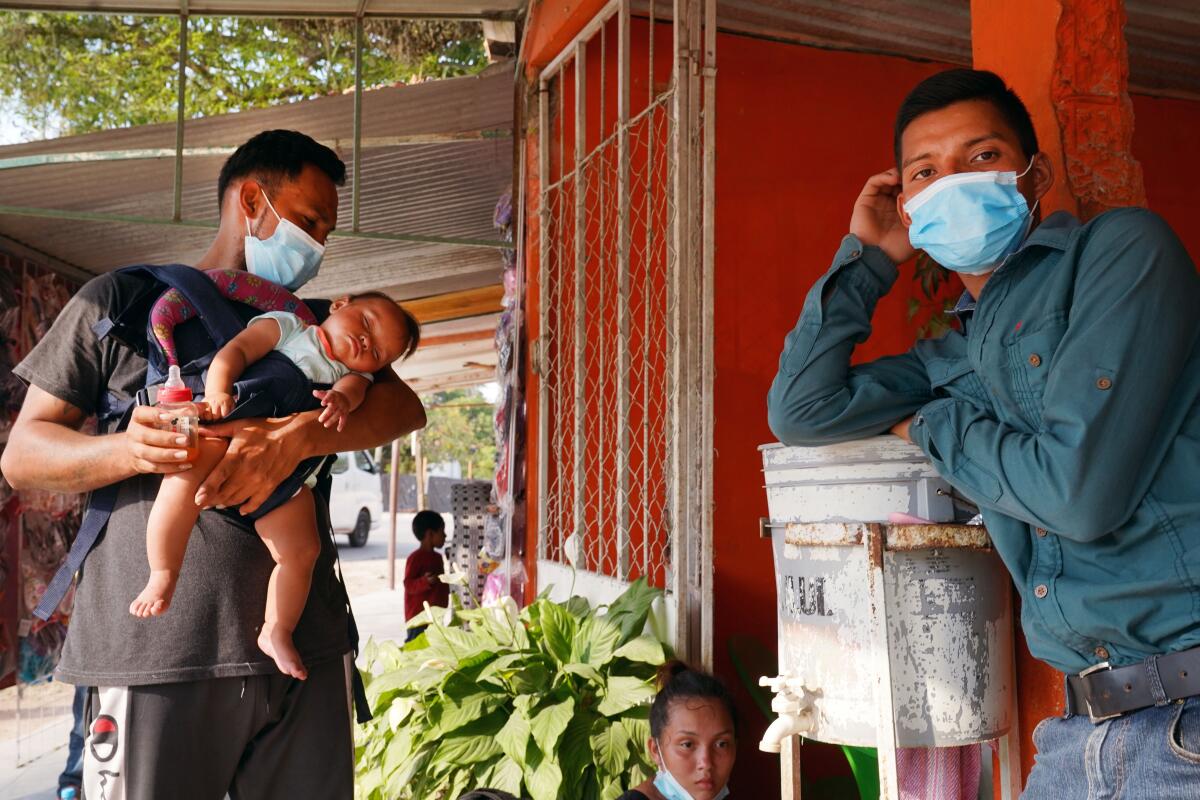
“If we can’t catch a ride by tonight, we’ll go someplace and stay a few days — maybe work and earn some money before continuing on,” said an exhausted and broke Gallardo, who said his family had already been walking and taking buses for 22 days — and still was more than 1,000 miles south of the U.S. border. A concerned restaurant owner invited the family to have scrambled eggs and soft drinks.
About 200 miles north, many migrants congregate in Coatzacoalcos, a crime-ridden petrochemical hub in Veracruz state. It’s also a train terminus; some hope to hitch rides on boxcars headed toward the U.S. border. Central Americans camp out along the tracks, where raw sewage flows freely.
“We want to go to America,” said Anthony Torres, 13, speaking as his close friend, Justin Soler, 12, nodded in agreement.
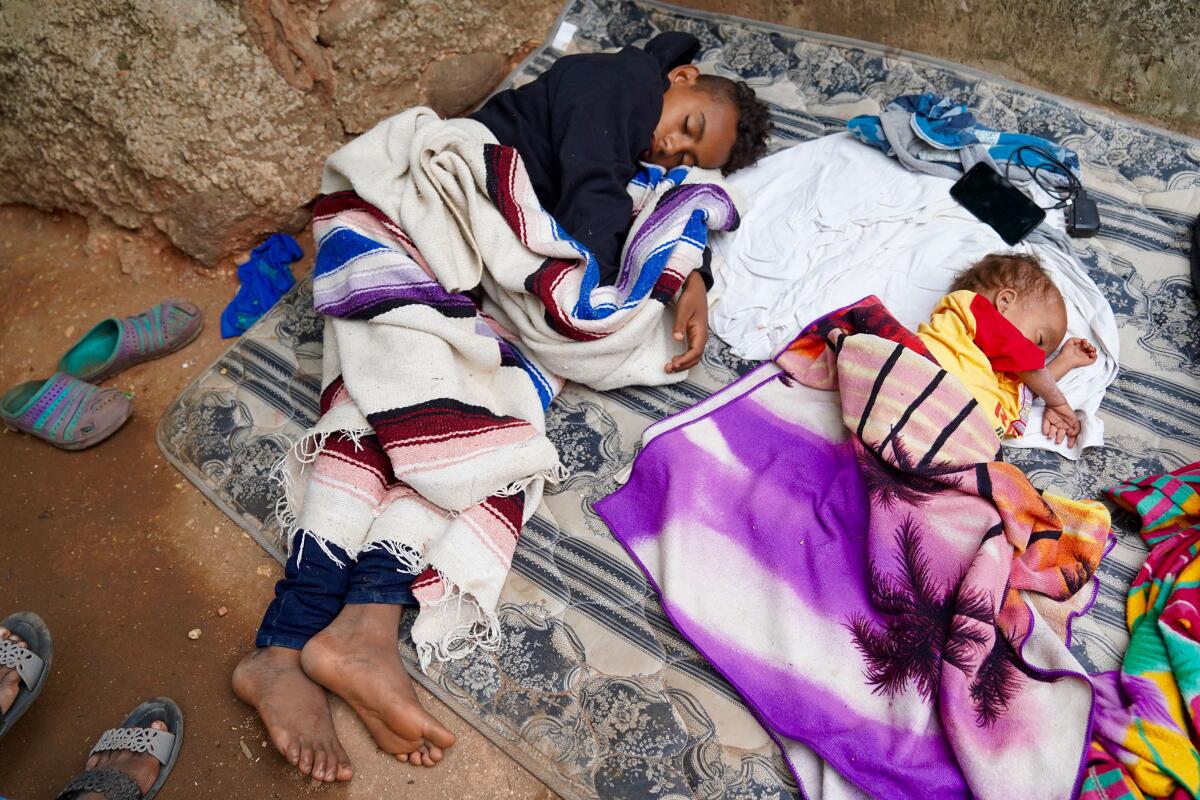
The two, both traveling with their families, met on the trek from Honduras. In Coatzacoalcos, Anthony was sleeping in an alley with his mother and younger brother a few yards from the tracks. The family had left Honduras 25 days earlier. Anthony had blisters on his feet from ill-fitting plastic sandals.
His brother, José Alejandro, 3, was ill with what his mother, Luz Mariela Torres, 40, called a chronic kidney ailment. The child’s legs were unusually thin and he appeared malnourished. His mother said doctors in Honduras couldn’t do anything.
“We hope he can find the right treatment in the north,” she said.
Staff from Doctors Without Borders, the Geneva-based charity, examined the boy at a mobile clinic. They recommended that he be hospitalized immediately. But the mother refused. She feared being separated from the other Hondurans with whom she was traveling, which would leave the family easy pickings for thieves and kidnappers.
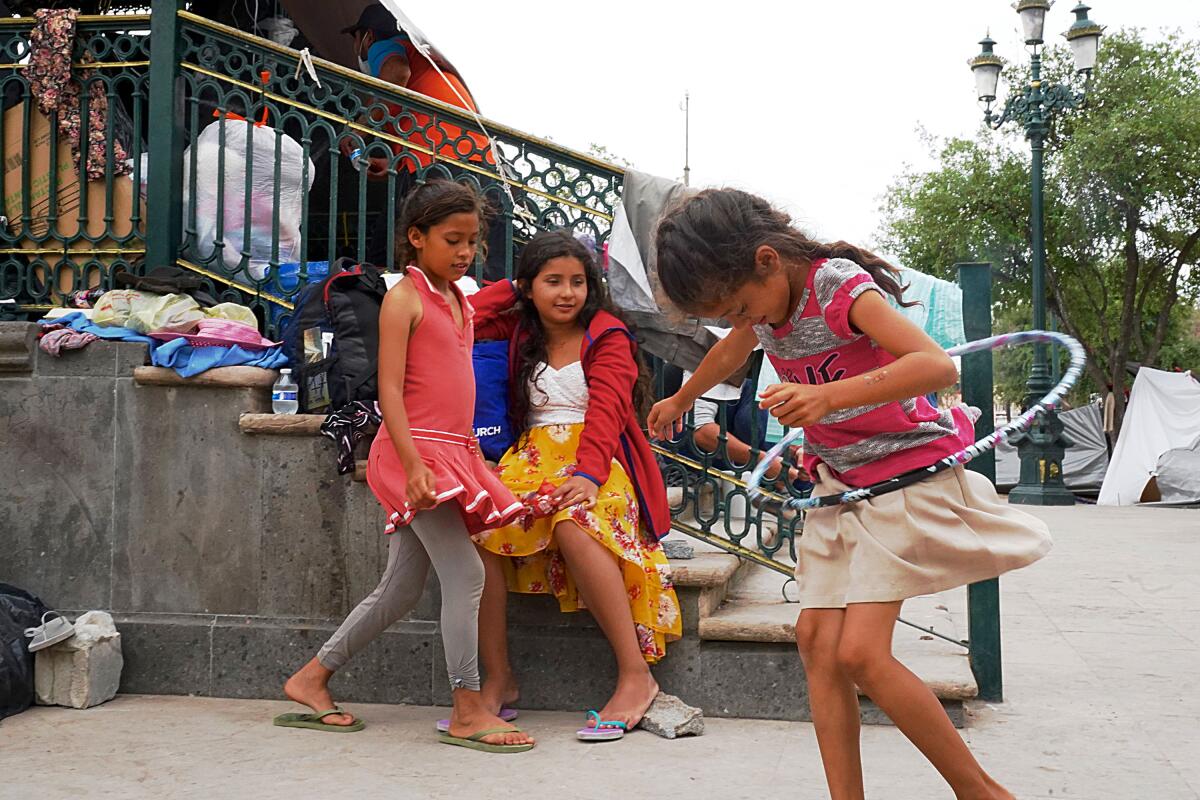
In Reynosa, across the Rio Grande from Hidalgo, Texas, grim columns of migrants booted out of the United States under pandemic rules daily trudge across the bridge back to Mexico. They carry their shoelaces and belts, removed as a suicide-prevention measure while in Border Patrol custody. Most hasten to the plaza-turned-migrant camp a block away from the Rio Grande, resisting entreaties from gang frontmen trolling for kidnap and extortion marks.
In the plaza, they catch shade and sleep in tents or in a gazebo that is the square’s showcase. Volunteer groups from Mexico and the United States provide food and water.
“The Mexican government does nothing for these needy people,” said Jonathan Hernández, who was part of a group handing out food to the migrants. “And the president of Mexico is never going to tell the most powerful country on Earth, ‘No, we won’t take them back.’ ”
The plaza has turned into a de facto village, with inhabitants offering haircuts, hawking food and other items. Mostly, though, denizens wonder about their next step. Many have already invested $6,000 or more per person with smugglers just to get this far. Some sold land or took out loans.
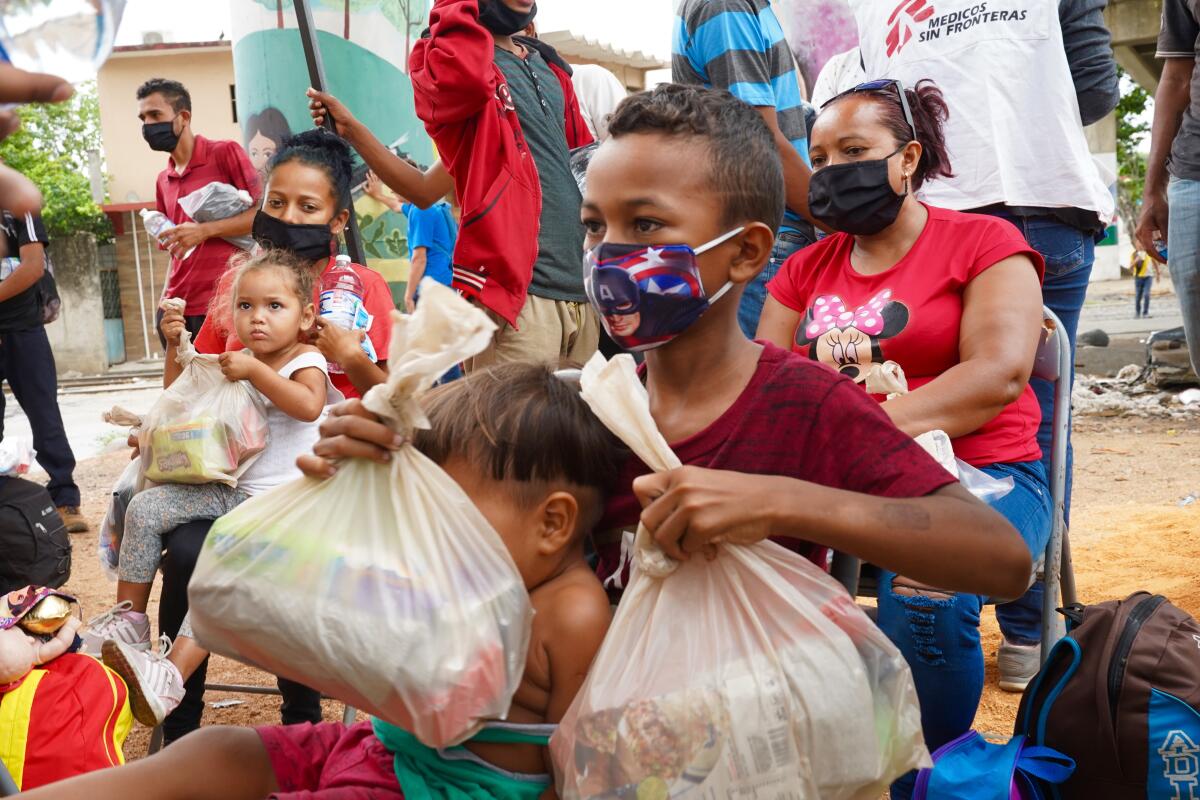
Some families opt to split up, hoping to maximize chances that someone is allowed to stay in the United States, given the seeming randomness of who gets in and who doesn’t. Others send their kids on to the United States alone, aware that Biden has ended the Trump administration’s pandemic-era practice of expelling unaccompanied minors. It is a wrenching decision, though, entrusting one’s child to the gangs that run the inflatable-raft racket across the Rio Grande — charging as much as $900 per head for a quick ride.
“I really don’t know what to do now,” said a distraught María Cordón, a 23-year-old mother of two from Copán in western Honduras.
She arrived in Reynosa 10 days ago with her husband and two children, a girl, 2, and a boy, 6, after contracting with smugglers. The family plans to go to Indianapolis, where her sister lives. The sister fronted the cash for the voyage. A job in construction awaits her husband.
Initially, Cordón said, the four crossed together, surrendered to the Border Patrol but were turned around immediately under pandemic rules. Then she crossed with the two kids; they were likewise returned. Finally, the night before, her husband crossed with the couple’s 2-year-old daughter; the boy stayed behind with his mother. She hadn’t heard from her husband for more than 12 hours. Someone from Texas had called her sister in Indianapolis, possibly about her husband and child. But the sister didn’t understand the English-speaking voice.
“I don’t know if I did the right thing, letting my daughter go with her father,” said Cordón.
She stared at her cellphone, trying to will an incoming text or call saying that father and daughter had arrived on the other side, and were safely on their way to Indianapolis.
Staff writer Molly O’Toole in the Washington bureau, and special correspondents Liliana Nieto del Río in Reynosa and Cecilia Sánchez in Mexico City contributed to this report.
More to Read
Sign up for Essential California
The most important California stories and recommendations in your inbox every morning.
You may occasionally receive promotional content from the Los Angeles Times.










